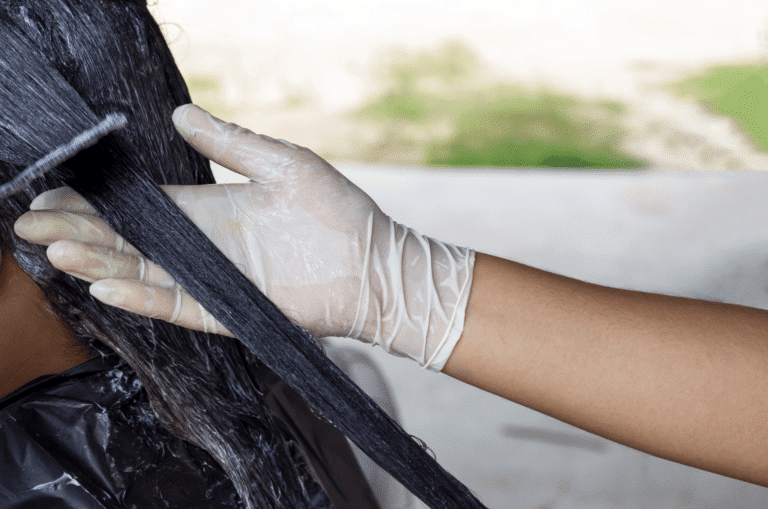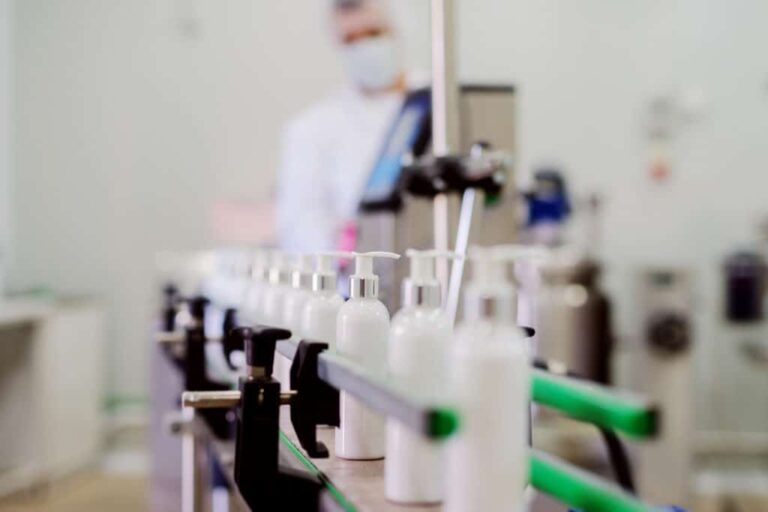Chemical Hair Straighteners Cancer Lawsuit
Millions of women across the United States use hair straightening and hair relaxing products every year in order to straighten out their curls. Some chemicals used in hair straighteners have been linked to uterine cancer and other diseases. As a result of this risk, the manufacturers of these hair straightening products are now facing lawsuits.

FREE CASE REVIEW
Home > Product Liability Attorneys > Chemical Hair Straighteners Cancer Lawsuit
The plaintiffs filed their lawsuits against the hair straightener manufacturers because they failed to warn consumers about the increased risks of cancer. The plaintiffs allege that the companies knew about the risks but continued to advertise and sell their products anyway. They are seeking monetary compensation and for their medical bills to be covered. If you have used or professionally applied hair straighteners with harmful chemicals that have been linked to uterine and other cancers and developed cancer as a result, you may have a case against the company that manufactured and marketed that product. Contact Farah & Farah today for a free case evaluation.

What Is a Hair Straightener?
A hair straightener, also known as a hair relaxer, is a type of product that smooths and straightens hair that is normally frizzy or curly. Some hair straightening products use heat to achieve straight hair, such as flat irons, hot combs, and blow-drying products. Other hair straightening products are chemical products applied to the hair. Some of these are creams that work on a more temporary basis while others are intended to be permanent.
Benefits of a Chemical Hair Straightener
Using a longer-term solution like a chemical hair relaxer could be a good option for those who are busy and don’t have a lot of time to spend on a daily straightening routine. Plus, people who have tightly curled hair or natural hair can achieve relaxed, straight hair when they might not otherwise be able to. This in itself can also free up time because straight hair may be easier to manage.
Downsides of a Chemical Hair Straightener
Although a chemical hair straightener may produce more long-lasting straight hair than other hair straightener options, it also has some downsides. The chemicals in a chemical hair straightener can be harsh. This could damage the hair over time, especially if the hair is fine, dry, or previously dyed. It’s also possible that a chemical hair relaxer could harm the scalp.

What Chemicals Are in a Hair Straightener?
A common ingredient in chemical hair straighteners is lye, which is a strong alkali substance that is commonly used in caustic bases. Another name for lye is sodium hydroxide. Other chemicals that may be included in a chemical straightener include:
- Formaldehyde
- Parabens
- Cyclosiloxanes
- Diethanolamine
- Benzophenone-3
- Phthalates
- Triclosan
- And more
Some of these chemicals, such as formaldehyde, are known to be carcinogenic, which means that they can cause cancer in humans.
Possible Damage from a Chemical Hair Straightener
Even under normal circumstances, a chemical straightener could damage your hair or even your scalp. It’s for this reason that, while it’s possible to use one at home, most professionals in the industry would recommend having your hair professionally straightened to reduce the risk of such damage.
Researchers have also found a link between certain beauty products like chemical hair straighteners and an increased risk of uterine cancer and other cancers.
Hair Straightener Links to Uterine and Other Cancers
In October 2022, the United States National Institute of Health announced the results of a study that the organization had conducted. The study observed 33,497 women over a period of 11 years. The participants in the study ranged in age from 35-74 and during that time, 378 of them were diagnosed with uterine cancer. The researchers found that those who were more at risk of developing cancer were those who had used chemical straightening products on their hair.
The study found that 1.64% of women who did not use hair straightening products would develop uterine cancer during their lifetimes. Of those who did use hair straighteners, by contrast, 4.05% would develop cancer. Hair straightening products were the only ones linked to cancer. The study also looked at perms, highlights, bleach, and hair dyes and found no increased risk of uterine cancer involving these products.
What Is Uterine Cancer?
Uterine cancer is a type of cancer that can occur in two forms: endometrial cancer and uterine sarcoma. Of the two, endometrial cancer is the more commonly occurring form. Both types of cancer are commonly referred to as uterine cancer, even though they’re different.
Endometrial Cancer
Endometrial cancer starts in the lining of the uterus. It’s often caught early because of the abnormal vaginal bleeding that can occur. Often, removing the uterus entirely is an option for treatment that could remove the cancer entirely.
Symptoms of Endometrial Cancer
The symptoms of endometrial cancer can include:
- Pain in the pelvis
- Bleeding in between periods
- Bleeding despite being post-menopausal
Causes of Endometrial Cancer
Endometrial cancer is caused by a mutation that occurs in the cells of the endometrium, or the lining of the uterus. This mutation alters the DNA of those endometrial cells and results in cancer forming there. What causes this mutation to occur, however, isn’t known.
Risk Factors of Endometrial Cancer
The following factors can increase the risk of developing endometrial cancer:
- Obesity
- Not having been pregnant
- Earlier menstruation
- Being older
- Changes in the balance of estrogen and progesterone, often caused by:
- Polycystic ovary syndrome
- Obesity
- Diabetes
- Hormones taken following menopause
- Ovarian tumors
- Hormone therapy
- Lynch syndrome (also known as hereditary nonpolyposis colorectal cancer, or HNPCC)
Uterine Sarcoma
Uterine sarcoma is the other type of uterine cancer and is much less common than endometrial cancer. This type of cancer begins in the muscles and tissues that support the uterus, called the myometrium. Uterine sarcoma is also more aggressive than most other uterine cancers.
Symptoms of Uterine Sarcoma
The symptoms of uterine sarcoma can include:
- Pelvic pain
- Unusual bleeding
- Frequent urination
- Constipation
- Smelly discharge from the vagina
- A lump, growth, or mass in the pelvis or vagina
- A feeling of fullness in the abdomen
It’s possible for symptoms to go unnoticed until the later stages of cancer, at which point it may have spread to other parts of the body. In some rare cases, there aren’t any noticeable symptoms at all.
Causes of Uterine Sarcoma
Just like with many other cancers, uterine sarcoma develops due to unusual cells that then multiply and spread. However, it’s unknown exactly what causes those cancerous cells to form in the first place.
Risk Factors of Uterine Sarcoma
The following factors can increase the risk of uterine sarcoma:
- Genetics
- Race
- Tamoxifen
- Radiation treatment on the pelvis
$2+ BILLION IN RESULTS

What Is Ovarian Cancer?
Ovarian cancer is a type of cancer that can form within the ovaries. There are three different kinds of ovarian cancer and they differ in terms of which type of cells in the ovaries they impact.
- Epithelial ovarian cancer is the most common type of ovarian cancer and affects the epithelial cells in the ovaries. Epithelial cells are found on surfaces both inside and outside your body and are found on the surface of the ovaries.
- Stromal tumors are rare tumors that grow in the stromal cells in the ovaries, which are connective tissues.
- Germ cell tumors are rare tumors that grow on the cells that become eggs in the ovaries.
Symptoms of Ovarian Cancer
The symptoms of ovarian cancer can include:
- Bloating
- Swelling in the abdomen
- Pelvic area discomfort
- Losing weight
- Fatigue
- Back pain
- Frequently needing to urinate
- Constipation or other changes in bowel movements
Causes of Ovarian Cancer
Ovarian cancer starts when the cells in the ovaries begin to mutate. These cells then rapidly reproduce, creating a tumor. These cancerous cells survive while healthy cells around them die and then they spread to other parts of the body. What causes those mutations to occur in the first place, however, doctors don’t know for certain.
Risk Factors of Ovarian Cancer
The following factors can increase the risk of developing ovarian cancer:
- Genetics
- Family history
- Older age
- Obesity or being overweight
- Earlier menstruation
- Endometriosis
- Postmenopausal hormone replacement therapy
- Later menopause
- Never being pregnant
What Are Uterine Fibroids?
Uterine fibroids aren’t cancerous, but they grow within the uterus, typically during childbearing years. They can range in size from so small that they’re unnoticeable to large and bulky enough to enlarge the uterus. There might be only one fibroid or many fibroids. Often, those with fibroids might not even know that they have them because sometimes there are no symptoms. Fibroids often aren’t dangerous, but could be uncomfortable and may result in other health complications like anemia. Some fibroids go away on their own, while others require surgical intervention.
Symptoms of Uterine Fibroids
If you do experience symptoms of uterine fibroids, these symptoms can include:
- Heavy periods
- Periods lasting longer than a week
- Pelvic pain
- Pelvic pressure
- Frequently needing to urinate
- Constipation
- Trouble emptying the bladder
- Leg pain
- Backaches
Causes of Uterine Fibroids
Doctors don’t know what exactly causes uterine fibroids to form, but hormones, genetic factors, growth factors, and an increased extracellular matrix can affect the growth of fibroids. They believe that fibroids begin to form when a stem cell starts to replicate and eventually create a mass of firm rubbery tissue that is distinct from the tissue that is nearby.
Risk Factors of Uterine Fibroids
The factors that can increase the risk of developing uterine fibroids include:
- Race
- Heredity
- Earlier periods
- Obesity
- Vitamin D deficiency
- A diet high in red meat
- A diet low in green vegetables, dairy, and fruit
- Drinking alcohol
What Is Endometriosis?
Endometriosis is a condition in which tissue that is similar to the endometrium inside the uterus starts to grow on the exterior of the uterus. Typically, this tissue grows near the ovaries, the fallopian tubes, and the pelvic lining, but can grow outside of the pelvis area as well, although that is rare. In endometriosis, this endometrial tissue behaves in the same way as it would if it were in the uterus: it goes through a menstrual cycle of thickening, breaking down, and bleeding. However, there’s no way for the blood to exit the body because it isn’t within the uterus, so it instead can turn into scar tissue, cysts, or adhesions that cause the tissues and organs within the pelvic region to stick to one another.
Symptoms of Endometriosis
The symptoms of endometriosis include:
- Painful intercourse
- Painful periods
- Painful bowel movements
- Painful urination
- Excessive bleeding
- Infertility
- Constipation
- Diarrhea
- Fatigue
- Nausea
- Bloating
Causes of Endometriosis
Doctors aren’t certain exactly what causes endometriosis, but the following are potential causes:
- Immune system disorders
- Peritoneal cell transformation
- Retrograde menstruation
- Surgical scar implantations
- Endometrial cell transport
- Embryonic cell transformation
Risk Factors of Endometriosis
The following factors could increase your risk of developing endometriosis:
- Not having given birth
- Long periods
- Heavy periods
- Short periods
- Starting your periods at an early age
- Having later menopause
- High levels of estrogen in the body
- Low BMI
- Family history of endometriosis
- Reproductive tract disorders
- Medical conditions that inhibit the passage of blood during menstruation
Hair Straightener Lawsuits
A lawsuit against L’Oréal, a French cosmetics company, was filed in October of 2022 on behalf of a woman in Missouri named Jenny Mitchell, who developed uterine cancer and claimed that it was due to long-term exposure to phthalates and other chemicals in the hair straightening products she had used since she was eight years old. Debrosse Zimmermann, Mitchell’s attorney, said that the case would mark a turning point for the millions who regularly treated their hair with such hair relaxers.
Mitchell is suing L’Oréal because of the uterine cancer she developed, which has ruined her dreams of having children. She is seeking compensation in the form of $75,000. Mitchell’s lawsuit is not the only one against cosmetic companies that sell hair relaxers. Others have also been filed in New York and in California.
for the family of a motorcycle rider killed by a driver who ran a red light
for a passenger injured when a truck struck a motorcycle
in the wrongful death of a wife who died in a motorcycle collision with a dump truck
for a rider who suffered a severe leg injury when struck by a car
for a rider injured when a careless driver pulled out in front of the motorcycle
Should I Consider a Hair Straightener Lawsuit?
If you have regularly used or professionally applied a chemical hair straightener, especially one that contains phthalates or formaldehyde, with four uses or more within a a 12-month period and three years of consistent use, and have been diagnosed with one or more of the following conditions at least one year following the first usage, which can be either personal or commercial, of the product:
- Uterine cancer
- Endometrial cancer
- Uterine sarcoma
- Ovarian cancer
- Endometriosis (that required or will require intervention)
then you may have a case against the company that manufactured the product.

Farah & Farah is committed to holding companies accountable for their actions when they have harmed their customers in the interest of profits. Don’t hesitate to contact us for a free consultation. You won’t have to pay a dime unless your case is successful.














FREE CASE REVIEW
